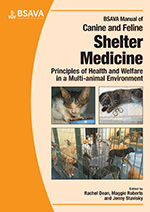
Full text loading...

This chapter provides an overview of the key aspects of population management from a practical standpoint and some of the emerging techniques and technologies that are likely to be instrumental in how cat and dog populations are managed in the future.
Concepts in free-roaming population control, Page 1 of 1
< Previous page | Next page > /docserver/preview/fulltext/10.22233/9781910443330/9781910443330.4-1.gif

Full text loading...





